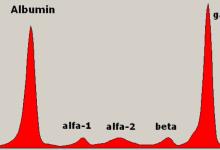SGLT-2 inhibitors for the prevention of autoimmune rheumatic diseases Save
Sodium-glucose cotransporter-2 (SGLT-2) inhibitors have been shown to have effects beyond glycemic control, showing cardioprotective and nephroprotective benefits along with modest weight loss. These same benefits have been realized in patients with rheumatic disease, including systemic lupus erythematosus.
SGLT-2 inhibitors include canagliflozin (Invokana), dapagliflozin (Farxiga), empagliflozin (Jardiance), bexagliflozin (Brenzavvy), and ertugliflozin (Steglatro). These agents have been shown to reduce the risk of major adverse cardiovascular events and hospital admissions for heart failure and also reduce renal progression in people with chronic kidney disease.
The linked study by Hong and colleagues (doi:10.1136/bmj-2025-085196) fills an important knowledge gap.7 The authors performed a population based new user cohort study using a South Korean nationwide health insurance database to evaluate the risk of incident autoimmune rheumatic diseases in adults with type 2 diabetes who initiated SGLT-2 inhibitors. New users of sulfonylureas served as active comparators since sulfonylureas were not expected to affect the risk of autoimmune rheumatic diseases.8 In exploratory analyses, the effect of SGLT-2 inhibitors on risk of autoimmune rheumatic diseases relative to dipeptidyl peptidase-4 inhibitors, thiazolidinediones, and glucagon-like peptide-1 (GLP-1) receptor agonists was also assessed. The primary outcome, incident autoimmune rheumatic disease (a composite of inflammatory arthritis (rheumatoid arthritis, psoriatic arthritis, or spondyloarthritis) and systemic autoimmune rheumatic diseases (systemic lupus erythematosus, Sjögren’s disease, systemic sclerosis, idiopathic inflammatory myositis, mixed connective tissue disease, polymyalgia rheumatica, or vasculitides)), was defined using both an ICD-10 (international classification of diseases, 10th revision) code and registration in a national programme that required a documented physician assessment confirming the diagnosis of an autoimmune rheumatic disease according to established classification criteria. This was one of the study’s strengths. Furthermore, normalised inverse probability of treatment weighting was used to control for potential confounders, and several sensitivity analyses were performed to test the robustness of the findings under different assumptions. Additional strengths included the consideration of time varying confounding and informative censoring, and the inclusion of both a positive and a negative control outcome.
Among 2 032 157 adults with type 2 diabetes followed for a median of nine months, the authors found that new users of SGLT-2 inhibitors had an 11% lower risk of incident autoimmune rheumatic disease compared with new users of sulfonylureas. The rate difference was −6.5 diagnoses per 100 000 person years, yielding a number needed to treat of 15 385. Results were directionally consistent across subgroup and sensitivity analyses. Analyses stratified by type of autoimmune rheumatic disease showed that SGLT-2 inhibitors were associated with a significantly lower risk of inflammatory arthritis, but not systemic autoimmune rheumatic diseases.
Mechanistically, it is biologically plausible that SGLT-2 inhibitors might reduce the risk of autoimmune rheumatic diseases. In preclinical studies, they have been shown to attenuate secretion of key pro-inflammatory cytokines implicated in the pathogenesis of several autoimmune rheumatic diseases, and induce shifts in macrophages from pro-inflammatory M1 to anti-inflammatory M2 subtypes.910 Autoimmune rheumatic diseases are relatively rare diagnoses, however, and incidence rates in Hong and colleagues’ study were lower than previous estimates from Sweden and the US.1112 Because the outcomes studied were rare, the absolute risk differences were small and the numbers needed to treat were large. The practical implications of the findings must be interpreted with this lens. To prevent one autoimmune rheumatic disease, >15 000 adults with type 2 diabetes would need to be treated with an SGLT-2 inhibitor rather than a sulfonylurea for one year.
While in isolation this study is unlikely to change practice, it is the first full length publication to suggest that SGLT-2 inhibitors reduce the risk of autoimmune rheumatic diseases. This intriguing finding, seen after only nine months of median follow-up, suggests a clinically relevant immunomodulatory effect that warrants replication in different populations. Studies assessing how the effect might change with longer term use and follow-up are awaited.
Finally, a shift away from sulfonylureas and towards SGLT-2 inhibitors and GLP-1 receptor agonists as second line treatment for type 2 diabetes is underway, since both are cardioprotective and nephroprotective and facilitate weight loss, whereas sulfonylureas promote weight gain and carry higher risk of hypoglycaemia.3 These shifts in practice patterns are seen in table 1 of Hong and colleagues’ study as well as in other studies.12 Like SGLT-2 inhibitors, GLP-1 receptor agonists have beneficial immunomodulatory properties, and their role in the prevention and/or management of autoimmune rheumatic diseases similarly warrants further study.413 Exploratory analysis from Hong and colleagues’ study suggested that SGLT-2 inhibitors did not reduce the risk of autoimmune rheumatic diseases compared with GLP-1 receptor agonists, but GLP-1 receptor agonists were infrequently used. Whether GLP-1 receptor agonists might also reduce the risk of autoimmune rheumatic diseases remains unknown. Hong and colleagues’ study sets a foundation for future research and provides preliminary evidence to support an additional reason to use an SGLT-2 inhibitor over a sulfonylurea for the management of type 2 diabetes.










If you are a health practitioner, you may Login/Register to comment.
Due to the nature of these comment forums, only health practitioners are allowed to comment at this time.